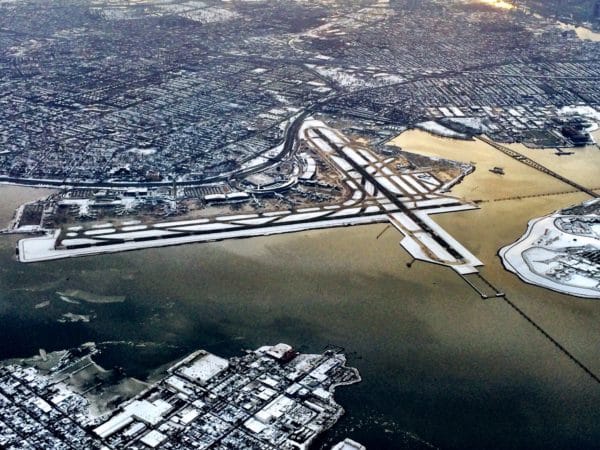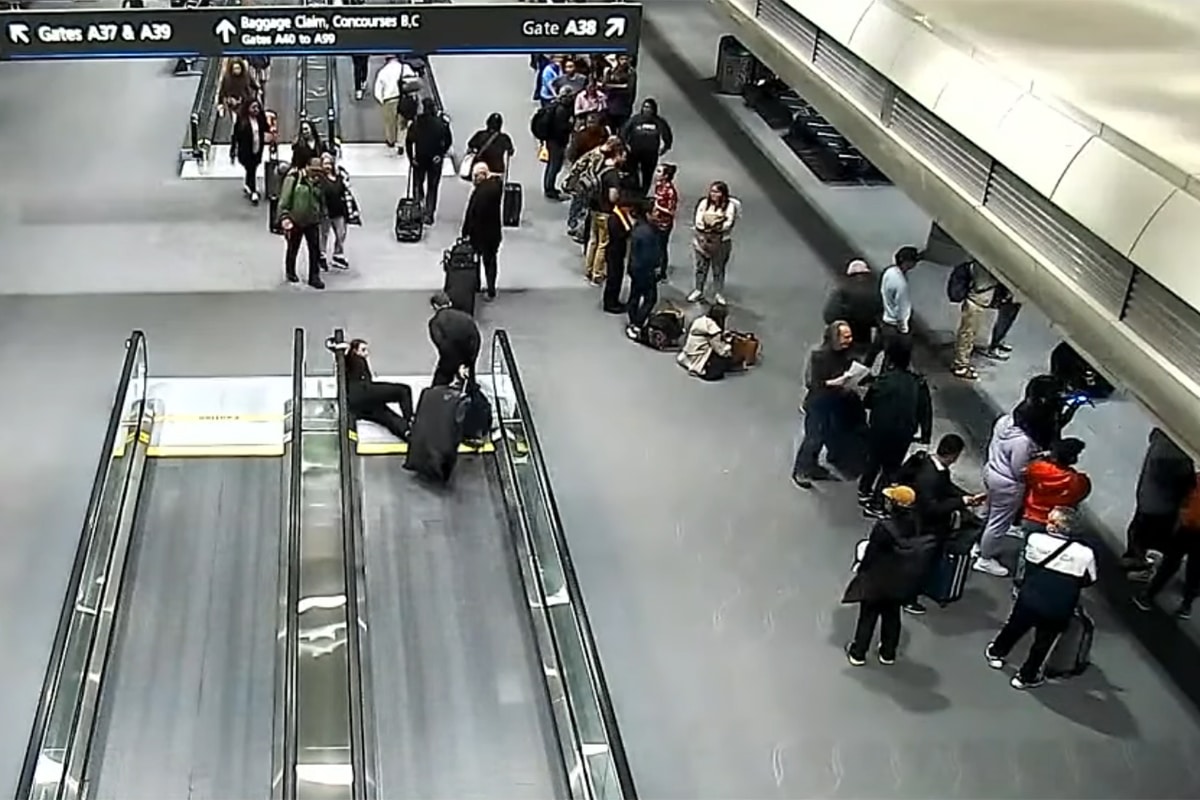
In our Ask a Pilot series, pilot Spencer Marker answers one of your aviation-related questions each week (picking up this week after a short baby-related break). See past installments here and submit your own to Whitney@johnnyjet.com.
Question
Hey Spencer, what dictates how an airport’s runways are laid out? Is there any rhyme or reason?
—Hector S.
Answer
Hey Hector, thank you so much for writing in this week. Airport layouts vary widely from single-runway operations like San Diego to hugely complex, cross-runway configurations like those found at Chicago’s O’Hare International Airport. The mentality behind airport configurations has seen a shift in recent decades, with crossing runways giving way to multiple runways that run parallel to one another. Let’s look into the logic behind airport configurations, and the thinking behind a modern airport’s configuration.
Why do the runways point that way?
When it comes to runway orientation, airport builders nearly always take into account the prevailing wind, or the direction that the wind blows the majority of the time. This is because aircraft must take off and land into the wind, or with a headwind. This shortens takeoff distance. So in coastal cities like those found along Florida’s Atlantic coast, you’d notice nearly every airport has runways that are pointed east/west. This is due to the prevailing coastal sea breeze from the east, and the land breeze from the west.
Additionally, runways will be oriented to avoid any terrain or obstacle hazards. For example, in Salt Lake City, the runways are oriented north and south, parallel to a ridge of mountains just a few miles to the east.
So how do we know which runway we are taking off and landing on? Well, in aviation, direction is dictated on a magnetic 360-degree scale with north’s heading 360°, east’s 090°, south’s 180°, and west’s 270°—just like on a compass. So when it comes to runway identification, airport officials take the magnetic heading the runway is facing and drop the zero. For example, a runway that faces east, or heading 090°, becomes runway 09 (or simply 9). A runway that faces west, or heading 270°, becomes runway 27.

When two or more runways face the same direction, they receive the labels Left, Right or Center. So in Fort Lauderdale, for example, there are two runways that are oriented toward a heading of 100°, so they are both runway 10. But if you’re approaching the airport, the runway situated on the left is identified as 10L (or 10 Left), while the other is identified as 10R.
Keep in mind also that a runway can be used from both directions (not at the same time, obviously). So landing one way, the runway may be identified as 10L. However, landing the other direction, it’d be identified as the opposite heading and orientation, 28R. Exactly 180°.
Airports with more than three runways that point the same direction, such as LAX or ATL, will simply use an adjacent heading to identify the other runways. For instance, all five runways in Atlanta face heading 274°. But the north runways are identified as 26R and 26L, the middle two runways are 27L and 27R and the furthest south runway is 28, despite the fact they all point the same way. A video explaining the concept can be found here.
Runway layout
When airports around the country were built in the early days of aviation, the flow of traffic wasn’t given as high of a priority as was ensuring that aircraft were always taking off and landing into the wind. As such, airports were constructed with runways pointing every conceivable direction and taxiways constructed to simply get aircraft from the ramp to the end of the runway.
Unfortunately, as air travel grew in popularity, airports with a complex web of runways and taxiways struggled to keep up with the increase in volume. This is due in large part to crossing runways. When one is used for takeoff and landings, the others can not be used until the crossing traffic is clear. Making the timing of these operations wildly inefficient.

For example, before the Atlanta Hartsfield-Jackson International Airport was the world’s busiest, it was simply the Atlanta Municipal Airport, with three runways in different directions that intersected at a single point. Over time, the airport evolved to its current configuration, with five runways built in parallel. This configuration was chosen because it allows for simultaneous departures and arrivals and eliminates the complexities of intersecting runways. O’Hare International in Chicago is currently undergoing a similar transformation.
To sum up
Thanks again for the excellent question, Hector. Historically, airport layouts were dictated solely by the prevailing wind. This often led to a complex layout with multiple intersecting runways. As air travel became more commonplace, and the skies more crowded, airport layouts began favoring a parallel configuration. This increased arrival and departure rates. But airport reconfigurations are large infrastructure projects that take time. And at some airports, like New York’s La Guardia, the runways can’t be reconfigured in the current airport footprint.

Thanks again for the question! Do you have a favorite airport? Share in the comments below! And remember, if anyone has a burning aviation question or something you would like cleared up, drop us a line at Whitney@johnnyjet.com to get your question featured in an upcoming Ask a Pilot column.
Tailwinds,
—Spencer








Very interesting, the same with the other articles you’ve written.
Thanks Kevin! Thanks for reading and I appreciate your comment!